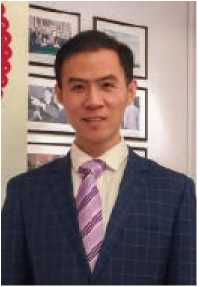Yiie Li
Max-Planck-Institut fiir Eisenfdrschung GmbH yue.li@mpie.de
EXTENDED ABSTRACT: Chemical short-range order (CSRO) refers to atoms of specific elements self^organising within a disordered crystalline matrix. These particular atomic neighbourhoods can modify the mechanical and functional performances of materials. CSRO is typically characterized indirectly, using volume-averaged (e.g. X-ray/neutron scattering) or through projection (i.e. two- dimensional) microscopy techniques that fail to capture the complex, three-dimensional atomistic architectures. Quantitative assessment of CSRO and concrete structure-property relationships remain unachievable. Here, we present a machine-learning enhanced approach to break the inherent resolution limits of atom probe tomography to reveal three-dimensional analytical imaging of the size and morphology of multiple CSRO. We showcase our approach by addressing a long-standing question encountered in a body-centred-cubic Fe-18A1 (at.%) solid solution alloy that sees anomalous property changes upon heat treatment. After validating our method against artificial data for ground truth, we unearth non-statistical B2-CSRO (FeAl) instead of the generally-expected D03-CSRO (Fe3Al). We propose quantitative correlations among annealing temperature, CSRO, and the nano-hardness and electrical resistivity. The proposed strategy can be generally employed to investigate short/ medium/long-range ordering phenomena in a vast array of materials and help design future high-performance materials. Keywords: Atom probe tomography; Chemical short-range order; Machine learning

Dr. Yue Li, Humboldt Fellow at the Max-Planck-Institut fiir Eisenfdrschung GmbH, Germany. He received PhD degree from University of Science and Technology Beijing at 2019. He mainly focuses on the atom probe tomography data analysis with the help of advanced machine learning algorithms. He has published 19 SCI papers including Progress in Materials Science, npj Computational Materials, Metallurgical and Materials Transactions A, etc.